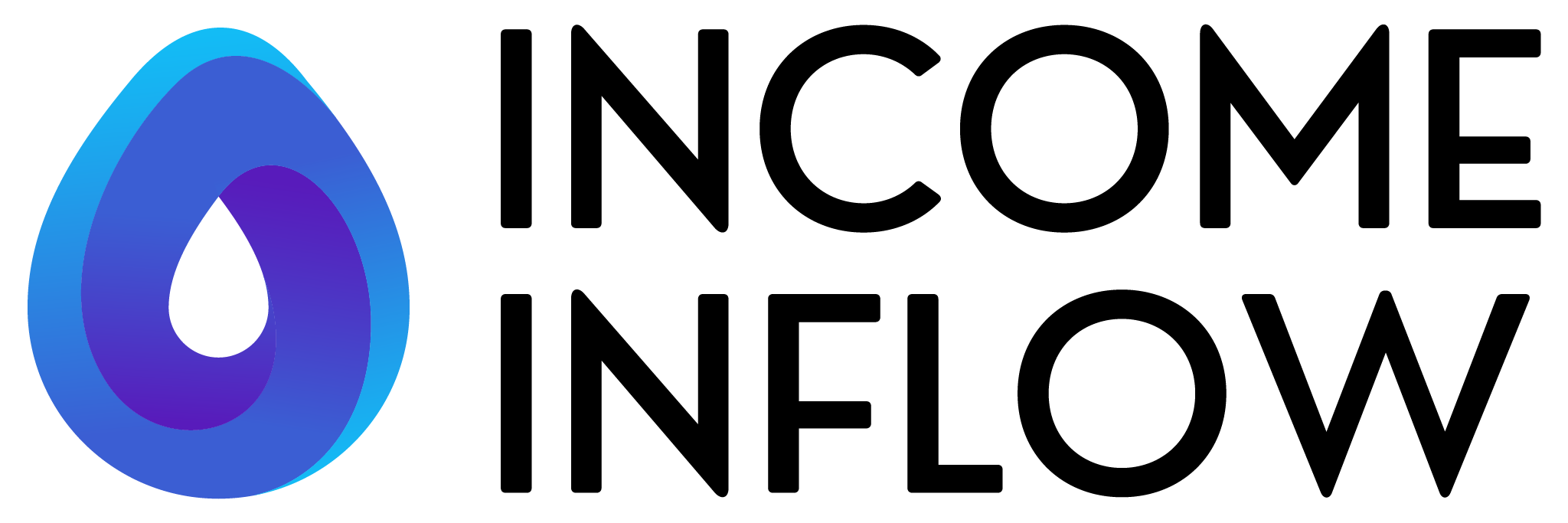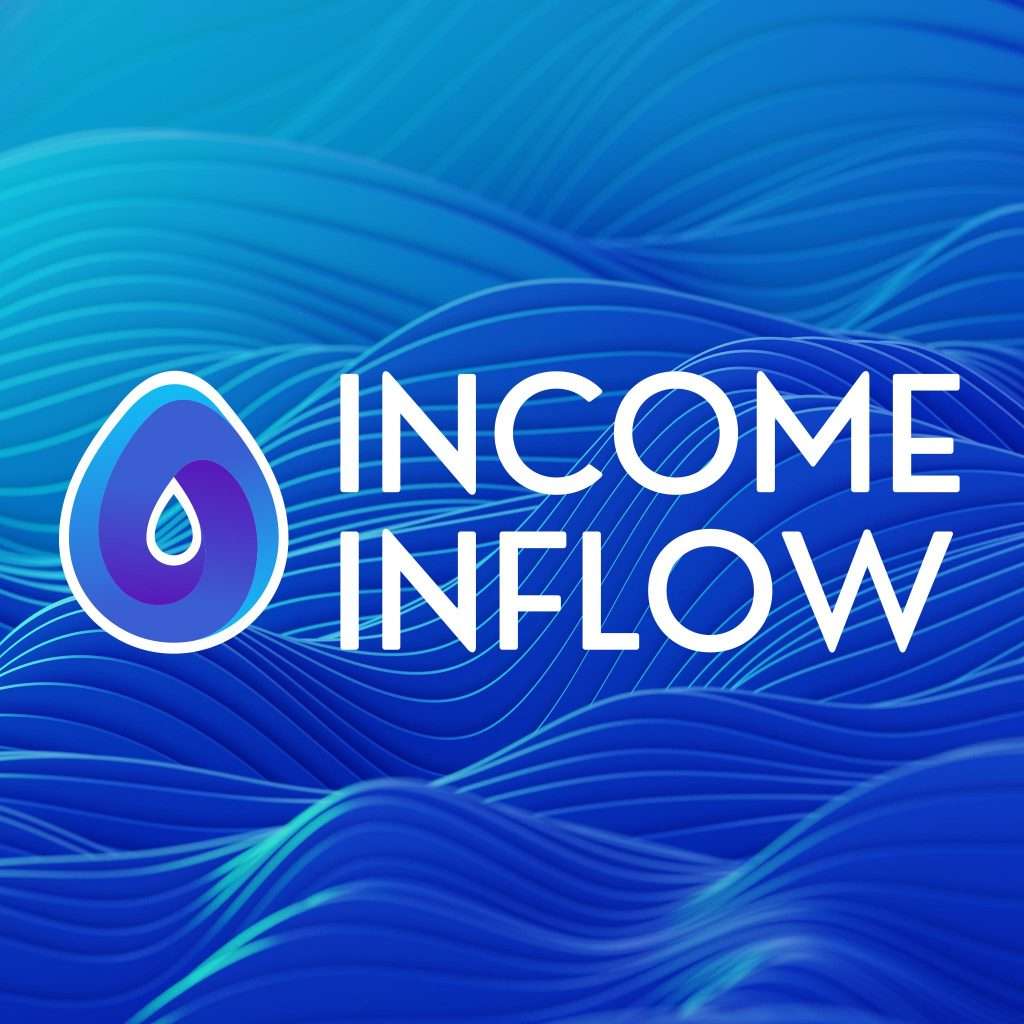We’ve compiled a list of the best online business models in 2023 to help you find the most suitable business model for your goals. The following business models can be used to start a new business, add passive revenue streams to an existing business, or start a side hustle from home.
The best online businesses to start in 2025:
- Freelancing
- Agency Business
- Coaching and Consulting
- Blogging
- YouTube Vlogging
- Membership Site
- Influencer Business
- Online Course Publishing as an Expert
- Online Course Publishing as a Producer
- Ebook Publishing
- Selling Stock Photos and Videos
- Selling Stock Designs
- Software Development Business
- Plug-in Development Business
- Ecommerce
- Dropshipping
- Print on Demand
- Affiliate Marketing
- CPA Marketing
Provide Services Online
Provide Services as a Freelancer
What is Freelancing?
Freelancing refers to working for yourself, rather than for a company. Although freelancers do engage in contract work for organizations, they’re essentially self-employed. As a freelancer, you can find jobs in almost every career. Freelance jobs vary from small, temporary projects to long-term, full-time projects.
Common freelance career fields: Digital Marketing, Content Creation, Writing, Editing, Language Translation, Photography, Videography, Graphic Design, Web Design, Web Development, Computer & IT, Accounting & Finance, Administrative, Customer Service, Education & Training.
Pros of Starting a Freelancing Career
With freelancing, you have the ability to:
- Set your own schedule and working hours
- Choose the clients you work with
- Control your workload
- Set your own pay rate
- Work remotely
Cons of Starting a Freelancing Career
A successful freelancing career may require the following:
- Expertise in your field – to get higher paying jobs and consistent orders
- A high-quality publicly accessible portfolio and client testimonials – to establish trust and convert prospects into clients
- Self-discipline – to meet project deadlines and prevent customer churn
Where to Find Freelance Jobs
There are a multitude of websites where you can find freelance work that suits your expertise.
Recommended freelance job boards:
- Flexjobs
- LinkedIn – Jobs
- Upwork
- Freelancer.com
- Fiverr
Provide Services as an Agency
What is an Agency?
An agency is an organization that provides services to other businesses. Agencies can provide services in any industry. Agency work can vary from small, temporary projects to long-term, full-time projects.
Pros of Starting an Agency
As an agency owner, you have the ability to:
- Delegate or outsource jobs in which you lack expertise
- Set your own pay rate
- Provide services remotely
Cons of Starting an Agency
A successful agency business may require the following:
- Management skills – to effectively delegate tasks and organize the work of in-house or outsourced staff
- A high-quality publicly accessible portfolio and client testimonials – to establish trust and convert prospects into clients
- More clients and projects relative to a freelance career – to offset the increase in costs associated with hiring in-house staff
Provide Coaching and Consulting Services
What is Coaching?
Coaching is providing expert guidance and support to clients with the aim of helping them achieve their life, business or career goals.
Popular categories of coaching: Life Coaching, Career Coaching, Business Coaching, Executive Coaching, Wellness Coaching, Performance Coaching, Skills Coaching, Financial Coaching, Spiritual Coaching, etc.
What is Consulting?
Consulting refers to providing expert recommendations to organizations or individuals working in a professional or technical field.
Coaching and consulting services can be provided in any field where individuals or organizations need help solving their problems or achieving their goals. For example, performance coaches are often responsible for unlocking the potential and maximizing the performance of their clients. You can provide coaching and consulting services as a solo expert or as a consulting firm by hiring or partnering with experts. Depending on your industry, you can provide both individual and group coaching and consulting.
Pros of Starting a Coaching & Consulting Business
As an online coach or consultant you have the ability to:
- Start a coaching or consulting business with minimum investment from home
- Provide coaching and consulting services remotely
- Engage in rewarding work that may have a direct impact on client results
- Set your own pay rate
Cons of Starting Coaching & Consulting Business
- Depending on your industry, you may need to obtain the corresponding credentials, certifications and training. Getting certified increases the credibility and marketability of a coach or consultant.
- You need great people and communication skills. Coaching and consulting requires constantly communicating with your clients. The better a coach or consultant is at communicating, the better the client results are likely to be.
- It takes time to build a solid reputation and a stable business.
Monetize Your Content
Start a Blog
What is a Blog?
A blog is an informational website that publishes articles on an ongoing basis. It is a platform for an author or multiple authors to share their knowledge and expertise on different topics. You can create a blog on almost any topic. Apart from publishing your own content, a blog can be used to curate relevant content from other sources.
There are multiple ways to make money with blogging, including: publishing sponsored content, placing advertisements, promoting affiliate offers and selling online courses.
Pros of Starting a Blog
- Relatively low startup and maintenance costs
- Flexibility – ability to work remotely and set your own schedule
- Ability to establish yourself as an authority in the industry
Cons of Starting a Blog
A successful blogging business may require the following:
- Search Engine Optimization (SEO) skills – to consistently generate organic traffic to the blog
- Continually publishing new content or updating existing content. Search engines provide users with the most relevant search results. If your content is outdated, it may drop in search engine rankings causing a decrease in your blog’s traffic.
- Maintaining a high level of content quality and value. Writing good content may take a lot of time and practice.
- It takes a relatively long time to start generating a significant level of organic traffic
Where to Publish Your Articles
As a blog author, you can publish your articles on specialized blogging platforms.
Recommended blogging platforms:
- Medium
- Tumblr
Alternatively, you can host your blog on your own website.
Recommended Website Builders for creating a blog:
- WordPress
- SquareSpace
- Wix
- Weebly
Create a Vlog on YouTube
What is a Vlog?
Vlog refers to a type of blog where most of the content is published in a video format. You can start a vlog by creating a channel on popular video platforms such as YouTube. YouTube allows both individuals and businesses to create a channel on their platform. A business channel on YouTube can have more than one owner or manager.
There are multiple ways to make money with a vlog on YouTube, including: publishing sponsored content, placing advertisements, promoting affiliate offers, and selling online courses.
Pros of Starting a YouTube Channel
- Relatively low startup and maintenance costs
- You don’t need a website to get started
- Flexibility – ability to work remotely and set your own schedule
- Ability to establish yourself as an authority in the industry
Cons of Starting a YouTube Channel
A successful YouTube channel may require the following:
- Video production skills. There are multiple skills involved in creating valuable content and professional videos on YouTube: competitive research, copywriting, video recording, audio recording, video editing, and graphic design.
- Search Engine Optimization (SEO) skills – to consistently generate organic traffic to the channel
- Continually publishing new content. YouTube is a search engine that aims to provide its users with the most relevant search results.
- Maintaining a high level of content quality and value. Creating good content may take a lot of time and practice.
Create a Membership Website
What is a Membership Website?
A membership website (also referred to as a subscription site) is a website with restricted access to content where users sign up as members and pay a fee to access that content. Member access can be provided on the basis of a one-time fee or an ongoing subscription. Popular examples of membership websites include: The Washington Post and The New York Times.
A content subscription website may offer different types of valuable content: industry publications, newsletters, courses, webinars, guides, access to members, exclusive event invitations, member-only deals and discounts.
Pros of Starting a Membership Website
A membership website enables you to:
- Generate recurring revenue (i.e. on a weekly, monthly or annual basis)
- Create a community with shared interests
- Become an an authority in the industry
- Automate business processes such as: membership signup and onboarding, payment processing and content delivery
Cons of Starting a Membership Website
- As the number of members increases, there are going to be higher costs associated with providing customer support.
- Maintaining a high level of content quality and value. In order for individuals to convert into website members, the gated content has to provide significant value. Maintaining a high level of content value and quality over time is necessary to keep members from canceling their subscription.
- High level of competition, including in the form of free content available online. In order to convert people into paid members, the content you provide needs to be unique and more valuable than what is already available online.
How to Create a Membership Site
Membership sites can be created using third-party membership site platforms.
Recommended membership site platforms:
- Kajabi
- Ghost
- Gumroad
- Thinkific
Alternatively, you can host your member-only content on your own website.
Recommended Website Builders for creating a membership site:
- WordPress
- SquareSpace
- Wix
Establish Yourself as an Influencer on Social Media
What is an Influencer?
Influencers are individuals with specialized expertise, authority or insight into a specific subject that also have a steady following. Influencers often use social media platforms to publish their content and engage with their audience. Influencers that establish a high level of credibility with their followers are able to affect the purchase decisions of those followers. Influencer Marketing refers to the collaboration between an influential person and brand in order to promote something.
There are multiple ways to make money as an influencer, including: publishing sponsored content, placing advertisements through social media content monetization programs, becoming a brand or product ambassador, raising funds through crowdfunding platforms, promoting affiliate offers or selling your own merchandise and courses.
Pros of Starting an Influencer Business
- Relatively low startup and overhead costs
- You don’t need a website to get started
- Ability to create a supportive community with shared interests
- Flexibility – ability to work remotely and set your own schedule
- Establishing yourself as an authority in the industry
Cons of Starting an Influencer Business
- As an influencer, you may need to continually communicate with your audience to keep your followers engaged
- The need to constantly come up with new content ideas and consistently publish new content
- A high level of competition due to low barriers to entry
- It takes a relatively long time to build a loyal following
Sell Educational Products
Publish Online Courses as an Expert
What is an Online Course?
An online course is a class that is taught over the Internet. This could be a live class or a pre-recorded class. Online courses have revolutionized formal education and provided an affordable means of gaining new knowledge and skills for people across the globe. Online courses could be taught to both individuals and corporations. Individuals may purchase online courses with the aim of getting promoted within their current organization or transitioning into a new career. Organizations may purchase online courses with the aim of increasing sales and improving the performance of their staff.
Pros of Starting an Online Course Business
- Online courses enable you to provide education to people around the world
- Ability to create a supportive community with shared interests
- Flexibility – ability to work remotely and set your own schedule
- Establishing yourself as an authority in the industry
- Ability to pursue a career in a field that you are passionate about
- High potential for generating passive income for courses that stay relevant for a long period of time
- The E-learning market experiences stable growth every year and is expected to double by 2026
Cons of Starting an Online Course Business
- Depending on your industry, you may need to obtain the corresponding credentials, certifications and training
- Online course delivery may require subscribing to or developing a digital course platform
- Rising costs of customer support associated with the increase in the number of students
Where to Publish and Sell Online Courses
There are multiple platforms that could be used to publish online courses and generate student traffic.
Recommended online course platforms:
- Udemy
- Skillshare
- Teachable
- Podia
- Kajabi
- Thinkific
Alternatively, you could publish online courses on your own WordPress website.
Recommended plug-ins for turning your WordPress site into an online education platform:
- LearnDash (WordPress Plug-in)
- LifterLMS (WordPress Plug-in)
Sell Online Courses as a Producer
What is an Online Course Producer?
An online course producer is responsible for finding experts and producing online courses by partnering with those experts. You don’t need to be an expert yourself to start an online course business. Online course producers negotiate partnership terms with experts, organize the course production process, generate student traffic for published courses, and provide customer support to enrolled students. An example of a popular online course production company is Foundr.
Pros of Starting an Online Course Production Business
- Being an online course producer enables you to publish courses on many subjects by partnering with experts from different fields
- High potential for generating passive income for courses that stay relevant for a long period of time
- Ability to work with and learn from the top experts
Cons of Starting an Online Course Production Business
- You don’t need to be an expert to start an online course business. You can partner with relevant experts.
- As a producer, you are responsible for all costs associated with course production, course promotion and customer support
- You need good management and communication skills to manage expert relationships, student relationships, and professional video shoots
Sell Digital Products
Self-Publish an Ebook
What is an Ebook?
Ebook is short for electronic book and refers to a book published in digital format. Ebooks can be read and stored on desktop, mobile, and tablet devices. By publishing a book in digital format you’re able to bypass the printing process. Unlike traditional books, ebooks can include interactive features such as video, audio and hyperlinks. You can write ebooks as the sole author, partner with other authors, or hire ghost authors to write the book for you.
Pros of Starting an Ebook Publishing Business
- Relatively low startup and overhead costs due to the absence of inventory and bypassing the printing process
- You don’t need to be an expert to publish helpful or entertaining books
- Flexibility – ability to work remotely and set your own schedule
- Establishing yourself as an authority in the industry
- Ability to create a supportive community with shared interests
- High potential for generating passive income for ebooks that stay relevant for a long period of time
- Ebook content can be repurposed as other content formats: audiobooks, articles, podcasts, videos, social media posts. Repurposed content can be used for generating traffic and sales via content marketing, social media marketing, and search engine optimization.
Cons of Starting an Ebook Publishing Business
- Providing a superior product may require advanced writing skills
- You may require search engine optimization (SEO) skills to promote your book effectively on marketplaces such as Amazon
- Costs associated with hiring writers, editors, cover designers, ebook formatters
- A high level of competition due to low barriers to entry
- It is easy for pirates to copy and distribute ebooks illegally
Where to Sell Your Ebooks
Ebooks are often distributed through specialized platforms and marketplaces. These platforms provide buyer traffic and take on payment processing and customer support.
Recommended ebook marketplaces:
- Amazon
- Audible
- Apple Books
- Google Play
- Scribd
- Etsy
Recommended self-publishing platforms:
- Amazon – Kindle Direct Publishing
- PublishDrive
Alternatively, you can sell ebooks directly to the consumer on your own website.
Recommended Website Builders and Ecommerce platforms for selling ebooks:
- Gumroad
- Podia
- Shopify
- WooCommerce
- SquareSpace
- Weebly
- Wix
Sell Your Photos or Videos
What is Stock Photography?
Stock photography refers to ready-made professional photographs which are licensed by companies and individuals for creative or commercial purposes. As a photographer, you can sell your work worldwide through stock photo marketplaces. Stock photographers earn money every time a license for their photo is sold.
What is Stock Video?
Stock video refers to ready-made professional footage, motion graphics, video project templates, and animation which is inserted into a larger video production project. Stock video is licensed by companies and individuals for creative and commercial purposes. As a videographer or animator, you can sell your work worldwide through stock video marketplaces. Stock videographers earn money every time a license for their video project is sold.
Pros of Selling Photos and Videos Online
- Increasing demand for stock assets due to the need for organizations to constantly produce new content
- By publishing your photos or videos on stock marketplaces you may be able to attract higher-paying clients and get more prestigious gigs
- Flexibility – ability to work remotely and set your own schedule
- You can choose whether to sell the same photos and videos on different marketplaces or earn a higher profit by committing to exclusivity on a single platform
Cons of Selling Photos and Videos Online
- Unless you already own professional equipment, it may be relatively expensive to start a stock photography or videography business
- A high level of competition due to global accessibility and an increasing number of assets being published
- It may take a relatively long time to start generating a significant income from stock photography or videography
Where to Sell Your Photos and Videos
Stock photos and videos are usually distributed through specialized marketplaces. These platforms provide buyer traffic and take on payment processing and customer support.
Recommended stock photo and video marketplaces:
- Shutterstock
- iStock
- Adobe Stock
- Etsy
- MotionArray
- Envato Market
- Envato Elements
- PhotoDune
- VideoHive
Alternatively, you can sell stock photo and video licenses directly to the consumer on your own website.
Recommended Website Builders and Ecommerce platforms for selling digital products:
- Gumroad
- Podia
- Shopify
- WooCommerce
- SquareSpace
- Weebly
- Wix
Sell Your Designs
What is Stock Design?
Stock design refers to ready-made professional design assets that are licensed by companies and individuals for creative and commercial purposes. As a professional designer, you can sell your work worldwide through stock design marketplaces. Stock designers earn money every time a license for their design project is sold.
There are different types of design assets that you can sell online, including: graphics, vectors, illustrations, icons, 3D models, fonts, logo templates, print design templates, UI/UX design kits, web design templates, and more.
Pros of Selling Your Designs Online
- Increasing demand for stock assets due to the need for organizations to constantly produce new content
- Flexibility – ability to work remotely and set your own schedule
- Ability to set your own pricing
- You can choose whether to sell the same design assets on different marketplaces or earn a higher profit by committing to exclusivity on a single platform
Cons of Selling Your Designs Online
- Relatively low startup and overhead costs
- Your projects may need to meet high standards set by marketplaces
- A high level of competition due to global accessibility and an increasing number of assets being published
- It may take a relatively long time to start generating a significant income from selling stock design assets
- Web design templates may require constant updates and providing customer support
Where to Sell Your Designs
Stock design assets are usually distributed through specialized marketplaces. These platforms provide buyer traffic and take on payment processing.
Recommended stock design marketplaces:
- Creative Market
- Etsy
- Design Cuts
- Society 6
- Zazzle
- Envato Market
- Envato Elements
- GraphicRiver
- 3DOcean
- Adobe Stock
- Pond5
Alternatively, you can sell design asset licenses directly to the consumer on your own website.
Recommended Website Builders and Ecommerce platforms for selling design assets and templates:
- Gumroad
- Podia
- Shopify
- WooCommerce
- SquareSpace
- Weebly
- Wix
Launch a Software Business
Create Your Own Software
What is Application Software?
Application software refers to a computer program designed to help end-users accomplish specific tasks. Applications can help individuals or organizations communicate, improve productivity and facilitate creativity. As a software business owner, you can develop various applications to help users solve their problems or accomplish their goals. Access to application software may be provided to users for a one-time fee or on a subscription basis.
What is Software as a Service (SaaS)?
Software as a Service (SaaS) is a software distribution model that enables you to deliver an application as a service over the Internet instead of having users install and maintain that application on their devices. SaaS applications are hosted on the software vendor’s servers and may be accessible to users on any device with an Internet connection.
Pros of Starting a Software Development Business
- Scalability – ability to scale the number of users quickly through marketing
- Flexibility – ability to work remotely
- High profit margins – ability to set your own pricing
Cons of Starting a Software Development Business
- Developing software requires advanced computer programming skills
- Costs associated with providing customer support
- Costs associated with maintaining and updating software to meet the requirements of other platforms and marketplaces and to keep the software functioning correctly on various devices and operating systems
- App marketplaces may require you to meet high software product and customer support standards
Where to Sell Your Applications
Software can be distributed through specialized app marketplaces which attract user traffic and handle payment processing and app delivery.
Recommended app marketplaces:
- Apple App Store
- Google Play Store
- AppSumo
Alternatively, applications can be provided as web service through your own website.
Create Plug-ins for Existing Software
What is a Software Plug-in?
A plug-in is a computer program that extends the functionality of existing software. Plug-ins enable users to cost-effectively customize applications to their needs without hiring developers. Mass software products are often created as customizable platforms and have a plug-in marketplace which enables users to add new features to existing software. For example, WooCommerce is a plug-in that adds Ecommerce functionality to websites created on the WordPress platform. As a professional software developer, you can sell custom plug-ins through software platform marketplaces. Access to your plug-ins may be provided to users for a one-time fee or on a subscription basis.
Pros of Selling Your Plug-ins Online
- Scalability – ability to scale the number of users quickly through marketing
- Flexibility – ability to work remotely
- High profit margins – ability to set your own pricing
Cons of Selling Your Plug-ins Online
- Developing plug-ins requires advanced computer programming skills
- Costs associated with providing customer support
- Costs associated with maintaining and updating plug-ins to meet marketplace requirements and to keep the plug-in functioning correctly with ongoing software updates
- Plug-in marketplaces may require you to meet high software product and customer support standards
- It may take a relatively long time to start generating a significant income from selling plugins, apps and extensions on stock marketplaces
Where to Sell Your Plug-ins
Plug-ins are usually distributed through stock marketplaces and marketplaces dedicated to a particular software product. These marketplaces provide buyer traffic and handle payment processing.
Recommended plug-in marketplaces:
- Shopify App Store
- Envato Market
- ThemeForest
- Envato Elements
- WordPress Plugins
- AppSumo
Sell Physical Products
Launch an Ecommerce Business
What is Ecommerce?
Ecommerce refers to purchasing and selling goods or services online and the corresponding exchange of funds and data used to carry out those transactions. The term Ecommerce is often used to mean the sale of physical goods online.
As an online store owner, you can choose from a variety of Ecommerce business models: Retail, Wholesale, Crowdfunding, Subscription, Manufacturing, Private Labeling, Dropshipping, and Print on Demand. Most of these business models do not require you to invent a new product or invest your own money into manufacturing to get started. For example, retail, wholesale, and dropshipping business models involve selling other companies’ products, the crowdfunding business model allows you to raise funds for manufacturing from crowdfunding platform users, the print on demand business model only requires you to create designs, and the private labeling business model allows you to order products that are manufactured by a third party under your own brand.
Pros of Starting an Ecommerce Business
- You don’t have to invent a new product or invest your own money into product manufacturing to get started
- Ability to automate product fulfillment using third-party logistics (3PL) services and fulfillment centers such as Amazon FBA
- Scalability – ability to scale sales quickly through advertising
Cons of Starting an Ecommerce Business
- Relatively high start and overhead costs for an online business
- Costs associated with warehousing and purchasing inventory in bulk
- Generating organic traffic through search engines and online marketplaces may require advanced search engine optimization (SEO) skills
- Advertising experience may be required to promote products sold directly to the consumer via your own store
- Market research experience may be required for forecasting product demand and making procurement decisions
- Costs associated with providing customer support and processing product returns and refunds
- Online marketplaces may require you to meet high product fulfillment and customer support standards
- Lower profit margin compared to selling digital products
- Costs associated with scaling. Scaling requires you to purchase, store, and manage more inventory and hire more staff.
- Management skills may be required to effectively delegate tasks and organize the work of in-house or outsourced staff
- A relatively high degree of competition
Where to Sell Physical Products
Physical products can be sold through online marketplaces that provide buyer traffic and take on payment processing.
Recommended online marketplaces:
- Amazon
- Ebay
- Etsy
- Wish
Alternatively, you can sell physical products directly to the consumer on your own website.
Recommended Ecommerce platforms for selling physical goods:
- Shopify
- WooCommerce
- BigCommerce
Where to Raise Money for Manufacturing Products
As a product inventor or designer, you can raise funds for manufacturing your products through crowdfunding platforms.
Recommended crowdfunding platforms:
- Kickstarter
- Indiegogo
Start a Dropshipping Business
What is Dropshipping?
Dropshipping is an Ecommerce business model that doesn’t require you to keep the products you sell in stock. As a dropshipping store owner, you are only responsible for promoting and selling products, and providing customer support. Order fulfillment and manufacturing is passed on to third parties.
Pros of Starting a Dropshipping Business
- Lower startup and overhead costs compared to traditional Ecommerce
- You don’t need to manage inventory or purchase it in advance. You only purchase inventory as needed after an order is placed by your customer.
- You don’t need to fulfill orders. Order fulfillment is passed on to third parties such as manufacturers and wholesalers.
- Scalability – ability to scale sales quickly through advertising
- Ability to automate dropshipping store management, product procurement, order processing, and customer support using third-party software
Cons of Starting a Dropshipping Business
- Generating organic traffic through search engines and online marketplaces may require advanced search engine optimization (SEO) skills
- Advertising experience may be required to promote products sold directly to the consumer via your own store
- Market research experience may be required for forecasting product demand and making product assortment decisions
- Costs associated with providing customer support and processing product returns and refunds
- Lower profit margin compared to selling digital products
- Online marketplaces may require you to meet high product fulfillment and customer support standards
- Long delivery times for products ordered from abroad. Long delivery times may cause customer refunds and may be unacceptable to marketplace platforms.
- Management skills may be required to effectively delegate tasks and organize the work of in-house or outsourced staff
- A relatively high degree of competition
Where to Sell Physical Products
Physical products can be sold through online marketplaces that provide buyer traffic and take on payment processing.
Recommended online marketplaces:
- Amazon
- Ebay
- Etsy
- Wish
Alternatively, you can sell physical products directly to the consumer on your own website.
Recommended Ecommerce platforms for selling physical goods:
- Shopify
- WooCommerce
- BigCommerce
How to Automate Your Dropshipping Business
As a dropshipping store owner, you are able to automate routine business processes such as store management, product procurement, order processing, and customer support using third-party applications.
Recommended dropshipping automation software:
- Dropified
- DSers
- Oberlo (Shopify App)
- AliDropship (WordPress Plugin)
Launch a Print on Demand Business
What is Print on Demand?
Print on demand is an Ecommerce business model that enables you to create customized designs for a variety of physical products and sell them under your brand while passing on manufacturing, inventory management and order fulfillment to third parties. As a print-on-demand business owner, you can utilize third-party platforms to sell custom-printed products in large volumes without the need to store or purchase inventory in advance.
Common print on demand product categories: clothing (t-shirts, hoodies, hats), accessories (jewelry, phone cases, tote bags, backpacks, mugs, water bottles), art (posters, wall art), stickers.
Pros of Starting a Print on Demand Business
- Lower startup and overhead costs compared to traditional Ecommerce
- You don’t need to manage inventory or purchase it in advance. You only purchase inventory as needed after an order is placed by your customer.
- You don’t need to print or fulfill orders. Printing and order fulfillment is passed on to print-on-demand service providers.
- Scalability – ability to scale sales quickly through advertising
- High degree of automation – ability to automate online store management, product procurement, order processing, and customer support using third-party software
Cons of Starting a Print on Demand Business
- Generating organic traffic through search engines and online marketplaces may require advanced search engine optimization (SEO) skills
- Advertising experience may be required to promote products sold directly to the consumer via your own store
- Market research experience may be required for forecasting product demand and making design decisions
- The need to constantly generate new designs as demand for existing designs fades
- Costs associated with providing customer support and processing product returns and refunds
- Lower profit margin compared to selling digital products
- Online marketplaces may require you to meet high product fulfillment and customer support standards
- Management skills may be required to effectively delegate tasks and organize the work of in-house or outsourced staff
- A relatively high degree of competition
Where to Sell Print on Demand Products
Custom-designed products can be sold through online marketplaces that provide buyer traffic and take on payment processing.
Recommended online marketplaces:
- Amazon
- Ebay
- Etsy
- Redbubble
- Wish
Alternatively, you can sell physical products directly to the consumer on your own website.
Recommended Ecommerce platforms for selling physical goods:
- Shopify
- WooCommerce
- BigCommerce
How to Automate Your Print on Demand Business
As a print on demand business owner, you are able to automate routine business processes such as store management, product procurement, inventory management, manufacturing, order processing, and customer support using third-party services.
Recommended print on demand automation services:
- Printful
- Printify
- SPOD
- CustomCat
- Spring
Promote Other Companies’ Products
Start an Affiliate Marketing Business
What is Affiliate Marketing?
Affiliate marketing is an advertising model where companies pay affiliate partners for promoting their products and generating sales. An affiliate is an individual or business that promotes another brand’s products in exchange for a commission. As an affiliate, you can promote affiliate programs and offers provided by affiliate networks or directly by advertisers. An affiliate program is an agreement that sets out the terms of partnership between the advertiser and the affiliate. Affiliate networks are platforms that manage affiliate programs for advertisers and act as the intermediary between the affiliate and the advertiser. Affiliate referrals are tracked using unique affiliate links provided by affiliate networks or vendors. There are affiliate programs available for both digital and physical products.
Pros of Starting an Affiliate Marketing Business
- Relatively low startup and overhead costs
- A wide selection of affiliate programs and offers in different niches
- You don’t need a website to get started. You can use advertising or social media channels to promote affiliate offers.
- No need to invent or manufacture products, manage inventory, fulfill orders, or provide customer support
- Scalability – ability to scale affiliate commissions quickly through advertising or compounding revenue streams from multiple affiliate programs
- Flexibility – ability to work remotely and set your own schedule
- The availability of marketing materials provided by affiliate vendors
Cons of Starting an Affiliate Marketing Business
- Generating organic traffic through search engines may require advanced search engine optimization (SEO) skills
- It takes a relatively long time to start generating a significant level of income by attracting organic traffic
- Affiliate networks may require you to submit proof of previous success as an affiliate or proof of an existing following
- You are required to follow affiliate program rules set by the affiliate network or affiliate vendor
- Relatively high level of competition due to low barriers to entry
Where to Find Affiliate Programs and Offers
As an affiliate, you can apply to promote affiliate offers provided by affiliate networks.
Recommended affiliate networks:
- Clickbank
- JV Zoo
- DigiStore24
- WarriorPlus
- ShareASale
- Impact.com
Alternatively, you can apply to affiliate programs managed directly by companies in different industries. For example, if you have a social media following that is interested in sports you can sign up to Nike’s affiliate program and promote Nike apparel to your audience.
Start an CPA Marketing Business
What is CPA Marketing?
CPA (cost per action) marketing is a type of affiliate marketing where affiliates are paid for actions performed by consumers as a result of the affiliates’ marketing efforts. In this case, affiliates receive a commission each time a desired action is completed by a target consumer. Depending on the requirements of a specific CPA program, the desired action may refer to a purchase, completed registration, contact form submission, app install, video view, and more. CPA programs are often managed by CPA networks who act as an intermediary between the advertiser and the affiliate (CPA partner). Similar to affiliate marketing, referrals are tracked using unique affiliate links provided by CPA networks.
Pros of CPA Marketing
- A wide selection of CPA networks, programs and offers in different niches
- You don’t need a website to get started. You can use advertising channels to promote affiliate offers.
- No need to invent or manufacture products, manage inventory, fulfill orders, or provide customer support
- Scalability – ability to scale CPA commissions quickly through advertising and compounding revenue streams from multiple CPA programs
- Flexibility – ability to work remotely and set your own schedule
Cons of CPA Marketing
- Advertising costs. CPA programs often require highly targeted traffic which can only be acquired through advertising.
- CPA networks may require you to submit proof of previous success with CPA marketing
- You are required to follow CPA program rules set by the CPA network or advertiser
- Relatively high level of competition due to low barriers to entry
Where to Find CPA Offers
As an affiliate, you can apply to promote CPA offers provided by a multitude of CPA networks.
Recommended CPA networks:
- MaxBounty
- AdWorkMedia
- CPAlead
Conclusion
The business models discussed in this article provide entrepreneurs with an opportunity to enter markets with year-over-year growth, increase online earnings, and generate passive income.
If you’re thinking of starting an online business, we recommend choosing a business model that is aligned with your:
- Skillset – what you’re good at
- Passion – what you’re passionate about and enjoy doing
- Financial goals – how much money you want to earn by a particular deadline
- Flexibility goals – how much time and location freedom you need for a balanced life
- Time availability – how much time you can dedicate to the business each day
- Budget – how much money you can invest in launching and scaling the business
Building a successful online business that provides you and your family with financial, time and location freedom can be difficult and can take a long time. And there’s no guarantee of success.
That’s why we’re here to make your journey easier. Income Inflow is on a mission to help more entrepreneurs start and grow a successful online business with minimum investment.
Sign up to our free newsletter to get 300+ FREE tools for growing your online business, exclusive deals on marketing & business software and training, in-depth software reviews, and effective marketing strategies to grow your online business.
Related Tools
ClickFunnels™ is the world’s simplest website and sales funnel builder for entrepreneurs. ClickFunnels™ is used by over 90,000 business owners to get their products and their message out to the world.
Bluehost is the best web hosting solution for cost-effectively starting and growing an online business. Whether you’re looking to create a website, blog or online store, Bluehost can get you started with a hosting plan tailored to your specific needs.







2 Responses
Id like to thank you for the efforts youve put in writing this blog. I am hoping to check out the same high-grade content by you later on as well. In truth, your creative writing abilities has motivated me to get my own, personal website now 😉
Excellent article! Your post is essential today. Thanks for sharing, by the way.